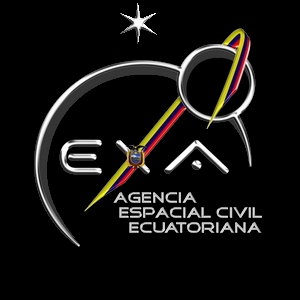FIRST ECUADORIAN
SATELLITE LAUNCH CONTRACT SIGNED
Quito, December 13, 2011.- Today the
Ecuadorian Air Force - FAE, the Ecaudorian Civilian Space Agency - EXA
and the Netherlands company ISIS signed the contract and agreements
needed to launch into orbit the first Ecuadorian satellite, the NEE-01
PEGASUS, on board a Russian Dnepr RS20 launch vehicle operated by
KOSMOTRAS from the Yasny cosmodrome on October 2012.
The NEE-01 PEGASUS was built by the
EXA and presented to the public on April 4, 2011, the satellite has a
mass of 1.2kg and it is 75cm long, it was completely designed and built
in the country with national personnel and equipment and it will perform
several missions in the technical and scientific fields as well as an
educational role, all this missions will serve the national
technological development in the aerospace field.
The satellite carries many advanced
technologies which by themselves are firsts for this kind of spacecrafts:
It will become the first nanosatellite able to transmit live video from
space, is the first of its kind in being equipped with a multilayer
shield composed by polymers and alloys that allows the spacecraft to
withstand solar flares and other space hazards, it is the first to have
a thermal stabilization system based in carbon nanotubes, it has the
world’s most thin solar panels, measuring only 1.5 millimeters thick,
made of 99.98% pure titanium and it’s the first in its class to have
multiple deployable solar panels, also it has the biggest power matrix
ever carried by a 1U cubesat with 28.8 amperes of total installed
capacity in a volume of only 200 cubic centimeters.
The signing ceremony was presided
by the FAE General Commander, Lt. General Leonardo Barreiro, the Dutch ambassador Barend van der Heijden,
The ISIS official, Abe Bonnema, The EXA Director General Héctor Carrión, and the EXA's Space Operations
Director and first ecuadorian cosmonaut, Cmdr. Ronnie Nader. Congressman
Rolando Panchana signed as honor witness.
After duly signing the documents,
the Russian ambassador presented the Space Flight Participation
certificate to the FAE and the EXA officials, which ensures the
launching slot for the first Ecuadorian satellite and credits the first
ecuadorian spaceflight to the Ecuadorian Air Force, alongside with the
EXA.
Besides the live video signal, the spacecraft
will send a constant radio signal that will act as a beacon, consisting
in its identification and the Ecuador’s national anthem.
The satellite’s primary mission is to test the
basic and key technologies that will allow the EXA and FAE to build bigger and
more powerful spacecrafts in the future and the secondary mission is to
serve as an space platform for elementary education: The satellite will
send two signals that will be received and decoded by the EXA’s
HERMES-A
ground station in Guayaquil and then uploaded
live to the Internet using Twitter and Facebook; the first signal will
contain text book questions and the second will contain an image related
to the question. If the students are able to answer the question
correctly they will be granted access to the video camera onboard the
spacecraft and will be able to see earth from space as the astronauts
see it in their space missions.
More advanced students will have access to the
pure radio signal so they can try decoding it by themselves. The EXA
will provide them with the appropriate support software free of charge.
Also, the satellite will observe
the Antartic continent in infrared wavelenghts in real time, being
capable to transmit its images directly to the Pedro Vicente Maldonado
base located in the white continent.
HIGH RESOLUTION PICTURES

